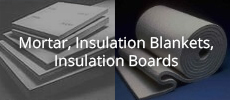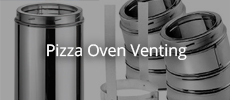Re: AAc blocks instead of Vermiculite insulation under slab
So, do we feel that this product can replace the superisol board? If so, it is dirt cheap. You can buy 24 panels (4" x 24" x 32") for $100.00.
Announcement
Collapse
No announcement yet.
AAc blocks instead of Vermiculite insulation under slab
Collapse
X
-
Re: AAc blocks instead of Vermiculite insulation under slab
RTflorida, hi there,
I have used these AAC blocks on several different occasions. Block layers adapt to them quickly, once they get used to the fact that you have to perfectly level your first course in some mortar, then let it set up. Then all subsequent courses just glue together (notched trowel with thinset adhesive). It is almost as easy as playing with LEGO blocks.
If you look on the Ytong site I referenced above, there are all sorts of specialty blocks they make for insulating and soundproofing these buildings.
Leave a comment:
-
Re: AAc blocks instead of Vermiculite insulation under slab
Living here in Florida, virtually every new home is built out of block. Although I've heard of this product, have never seen it or the specs. If I build another house this product looks to be the ticket. I think the reason I have only heard of it and not seen it has to do with any additional cost there might be. I don't mean to insult any FL builders or developers, BUT, every aspect seems to be cost related - whether its in materials, labor, or time. No such thing as quality or inovation, even if you are willing to pay for it.
I'm very curious to hear from anyone who has actually used any of these products.
RT
Leave a comment:
-
Re: AAc blocks instead of Vermiculite insulation under slab
Products - xella International here is the Ytong site in Germany (in english)
This stuff was invented in Sweden quite a while ago (100 years or so), they add aluminum silicate to portland which foams the material, then it goes into an autoclave (bake oven) to set and cure, then it gets cut into blocks. It comes in 3 or 4 standard densities and in a bunch of different dimensions. It saws with a crosscut lumber saw by hand very easily. I built most of my house interior walls with it and should have used it on the outside as well. That was about 9 years ago, when Ytong still had a plant down in FL.
In Germany you can buy whole house kits for do -it -yourself masonry houses.
They have even built passive houses (i.e. no heating system) there with Ytong.
The direct flame exposure suitability is unclear to me, I would also think it is too insulative and has very low heat capacity, i.e. it will not store heat easily.
I remember something factor 10 less heat storage than concrete.
I have not priced the stuff recently, considering it's R value and the insulation off-set in house construction, it cost a bit more than CMU's, but it lays up quicker and you are done insulating.
All in all a great material, I happen to have a few blocks still kicking around and think I am going to incorporate them into the oven foundation.
I am sure I have many more questions once I get started.
Leave a comment:
-
Re: AAc blocks instead of Vermiculite insulation under slab
Oh, and welcome VTBread. And thanks for your contribution. I have a thousand ideas for this AAC stuff already.
Leave a comment:
-
Re: AAc blocks instead of Vermiculite insulation under slab
Why have I never heard of this stuff? Seriously, click the link and look at the pages. Why isn't everything built out of this?
They have floor panels and lintels which could mean building an oven in two days once the slab's poured.
What is the cost structure like? Is it way more expensive than traditional masonry?
Leave a comment:
-
Re: AAc blocks instead of Vermiculite insulation under slab
I realized I never linked back to the older thread... really showing off my forum skills here...
The AAC blocks are factory cut, tolerances are very tight. I would pour a structural slab then set the AAc dry in a thin bed of sand/fireclay (as you suggest) and then surround them with more concrete to lock them in. I would then proceed to build hearth on top of the AAC as well as the dome. Then insulate the dome with thin layer of ceramic insulation then with Rockwool or with vermiculite depending on the outside finish construction.
Leave a comment:
-
Re: AAc blocks instead of Vermiculite insulation under slab
Interesting idea - make hearth insulation out of the bricks just butted up against each other, no mortar should be needed on a smooth surface, although the sand/fireclay mix could help keep them from shifting and flatten a non smooth surface.
Leave a comment:
-
Re: AAc blocks instead of Vermiculite insulation under slab
SafeCrete.com - AAC Internet Sales / AAC Products / AAC Information / AAC Construction
that's the conductivity chart
the manufactureres and trade association website
SafeCrete.com - AAC Internet Sales / AAC Products / AAC Information / AAC Construction
Concrete Homes - Autoclaved Aerated Concrete
and here is the thread with the pics that show the AAC being used in a commercial installation a while ago. Posted by Hondo towards the end of tha page..
Thanks.
Leave a comment:
-
Re: AAc blocks instead of Vermiculite insulation under slab
one more post and I can show you the links - for some reason the system will not let me link unless I have 2 posts up an running...
Leave a comment:
-
AAc blocks instead of Vermiculite insulation under slab
hi there,
New member in Vermont. I am going to build a tuscan style round oven this summer (we just got another foot of snow, so I have some planning time still) and I was curious to know if anyone has used AAC (autoclaved aerated concrete) blocks for insulation under the slab of the oven. They are highly insulative and easy to cut and fit. The link above is from an older thread in the archives, which shows some commercial installers using it under a slab. Nobody picked up on the material in that thread though. It has been commonly used in Europe and NA in masonry fireplace construction for insulative layers, i.e. where a heater would backup to a combustible wall etc.
Here is a link to some of the US manufacturers:
Here is the thermal conductivity graph, I actually looked it up a few adys ago on an engineering site (cannot find it again now, of course) and it was really close in insulating value to the stuff James recommends)
euro's will know this material as Ytong or Hebel (those are the two largest manufacturers)
So, any ideas or comments? Thanks.Tags: None






Leave a comment: